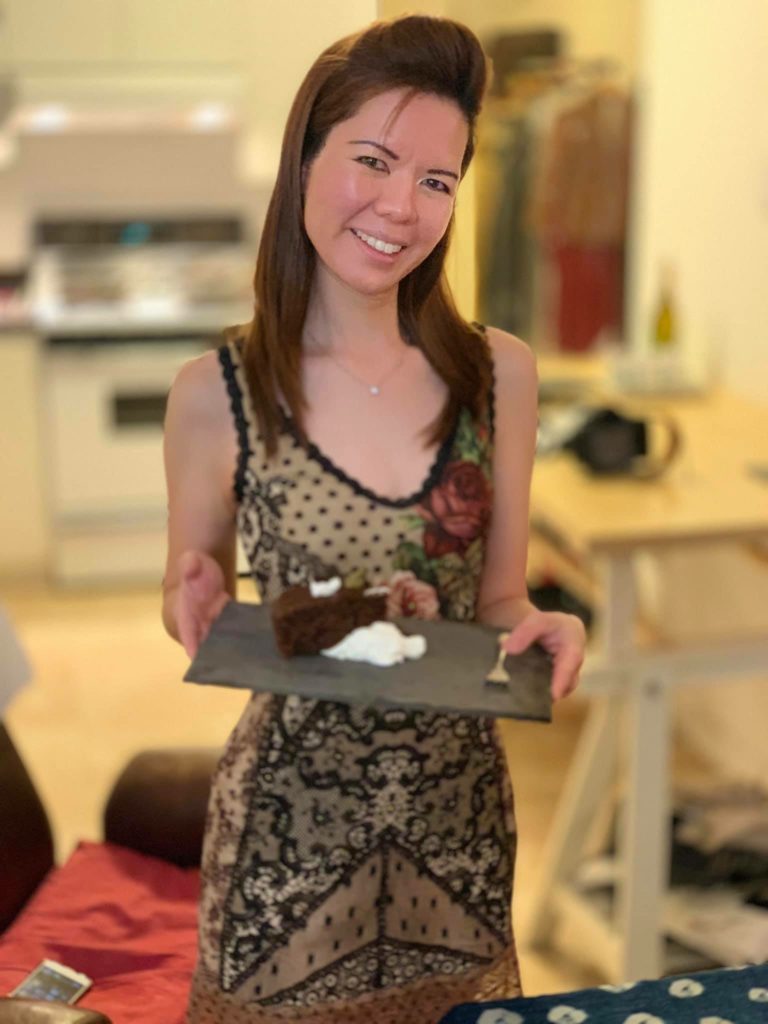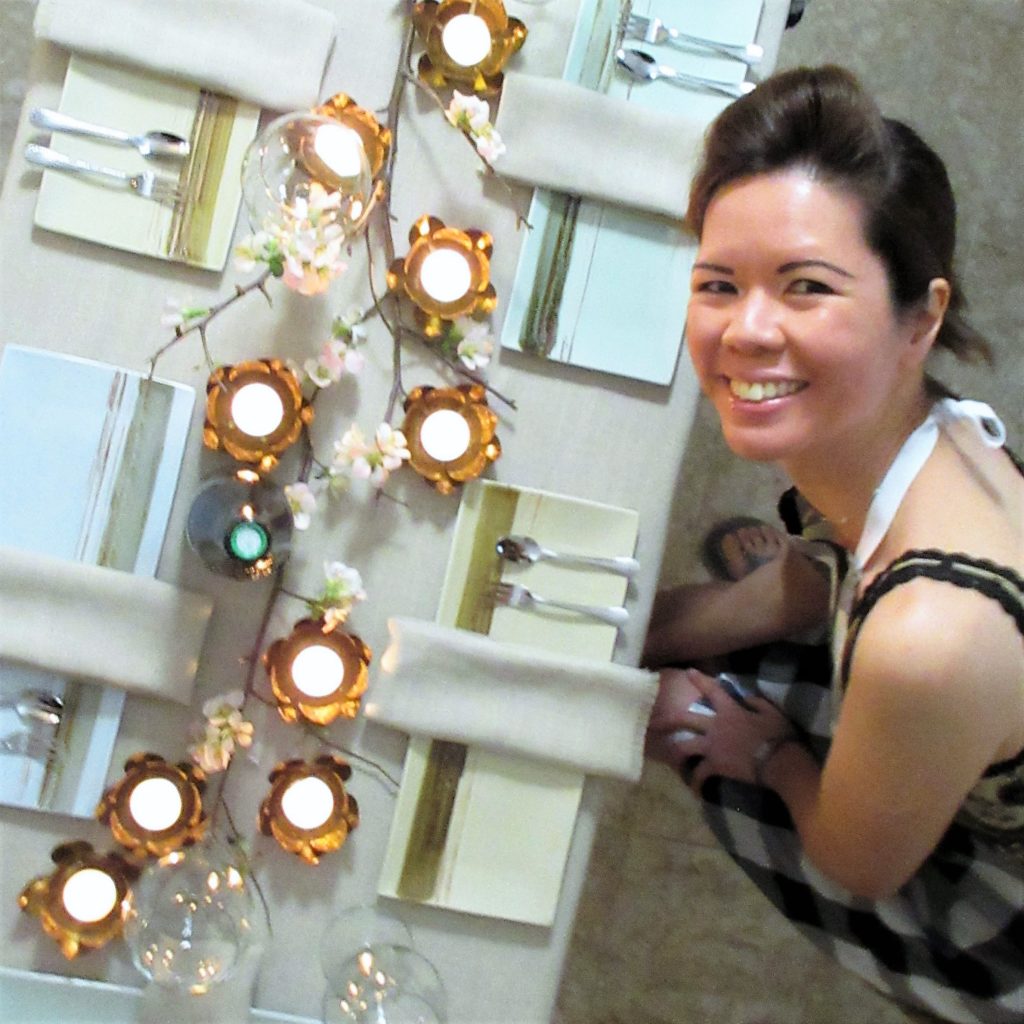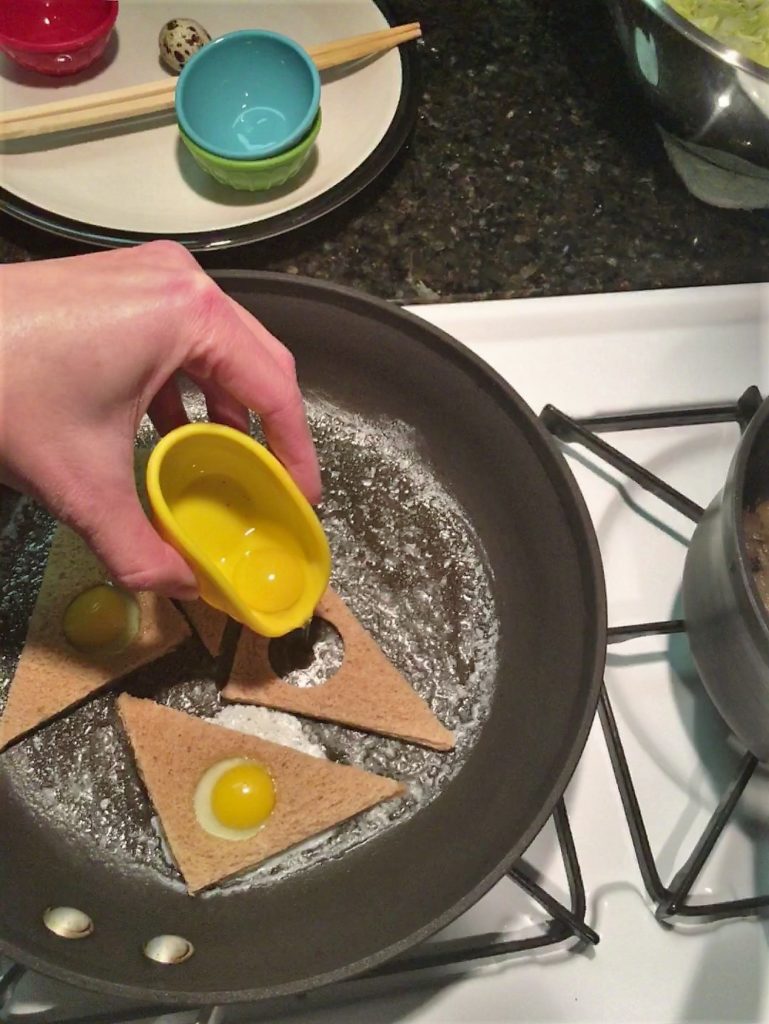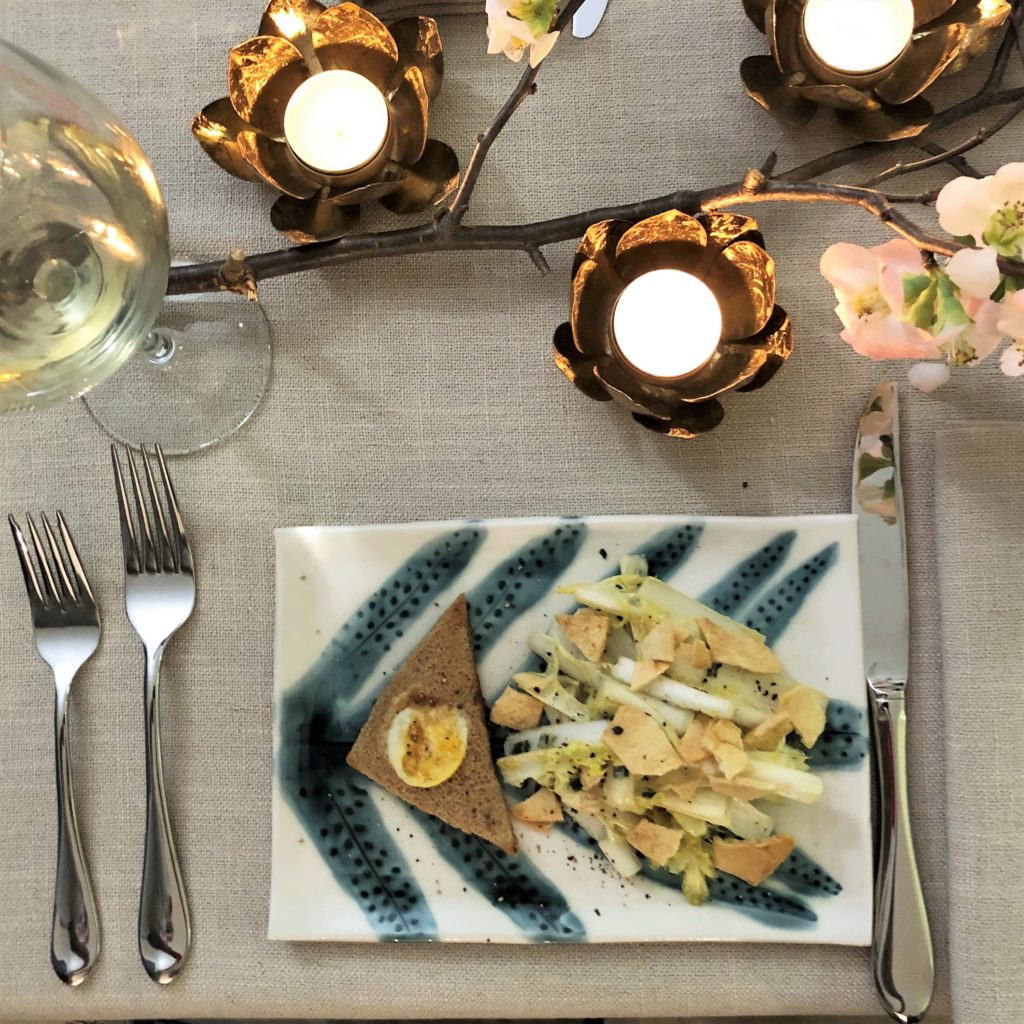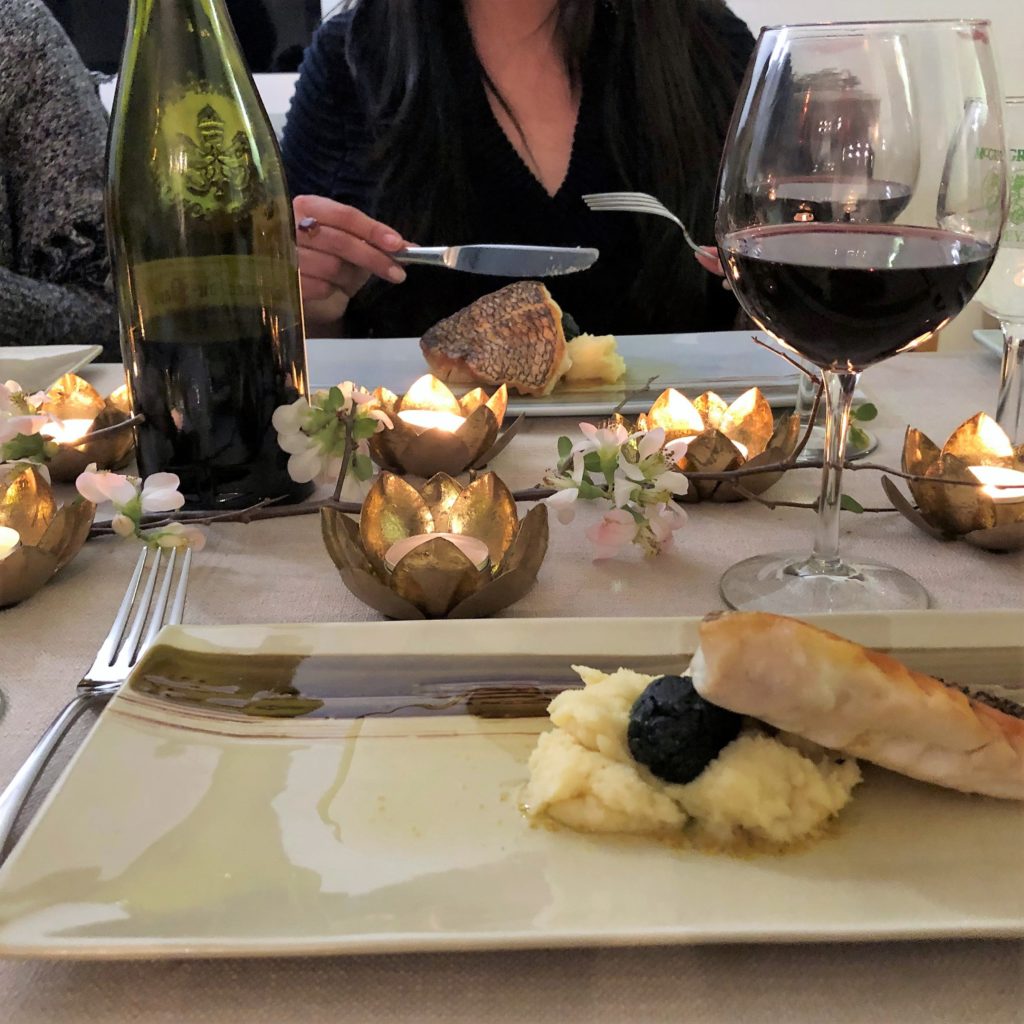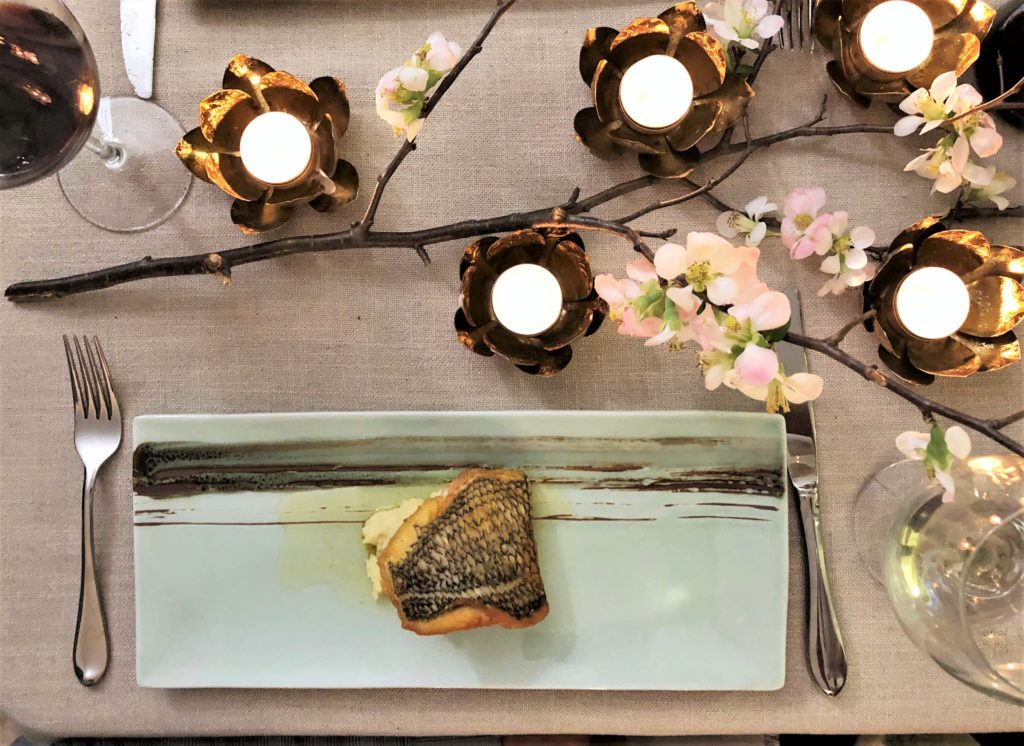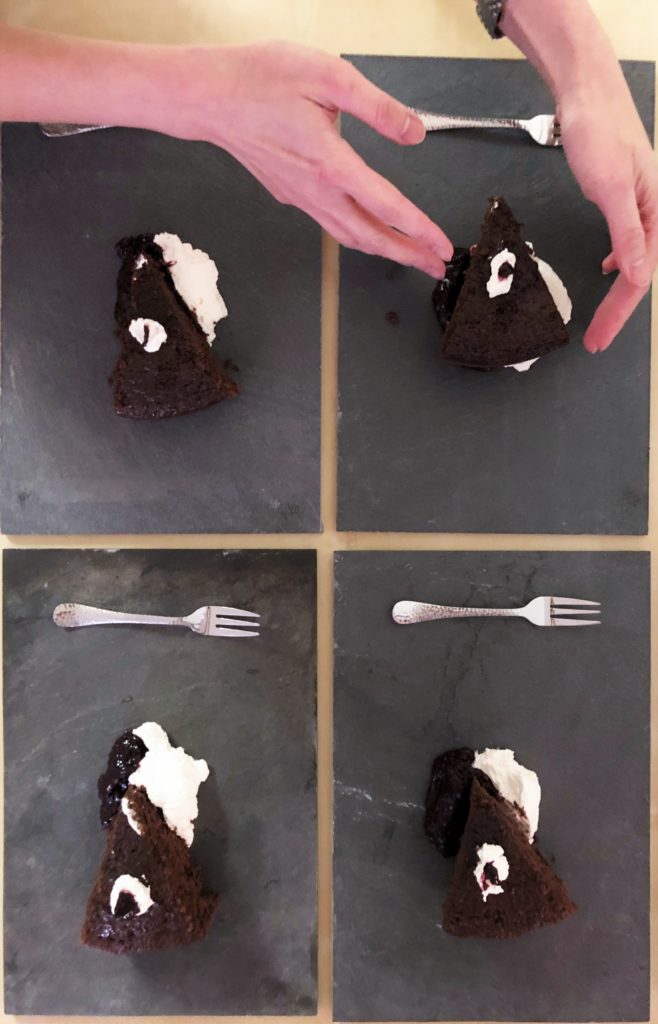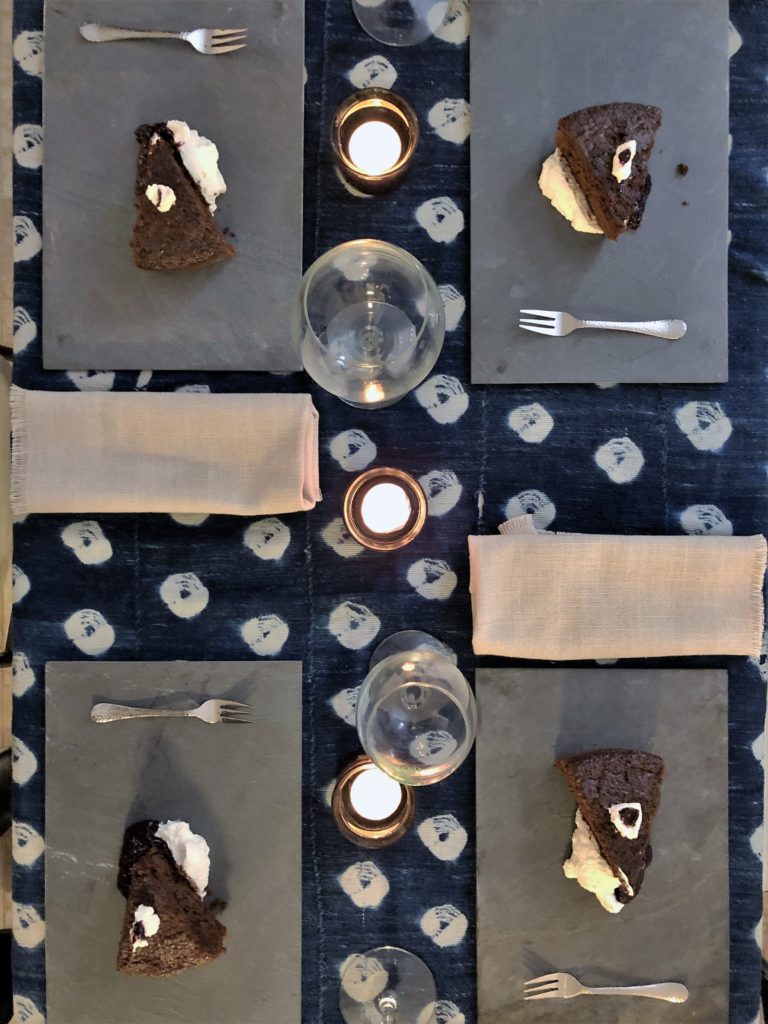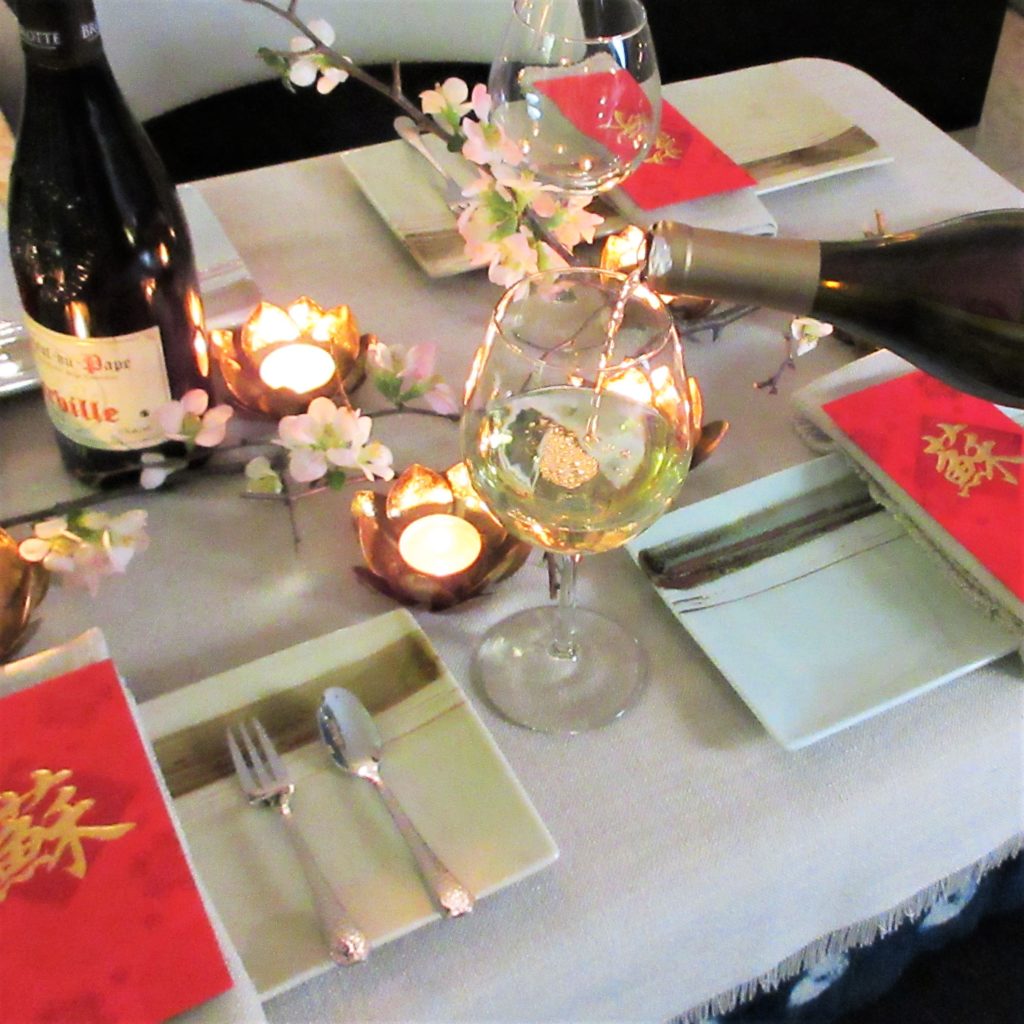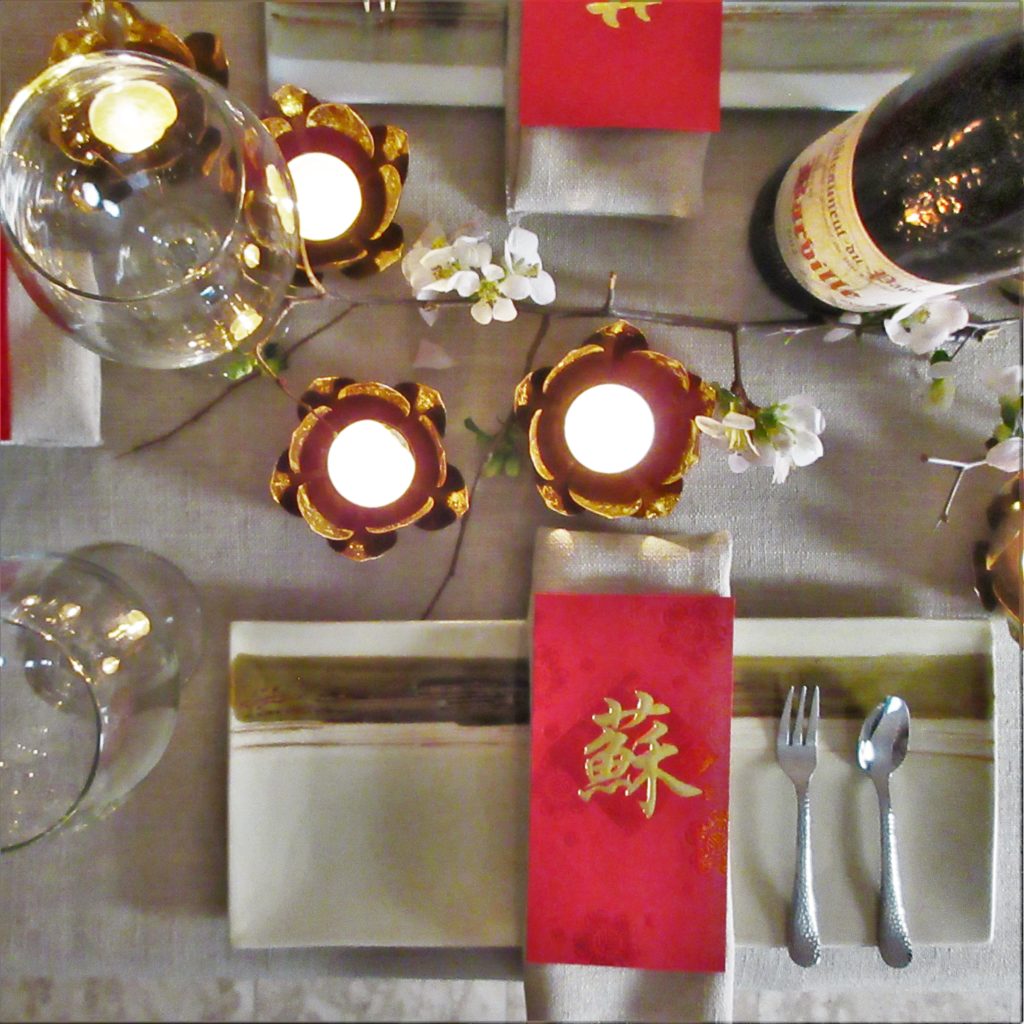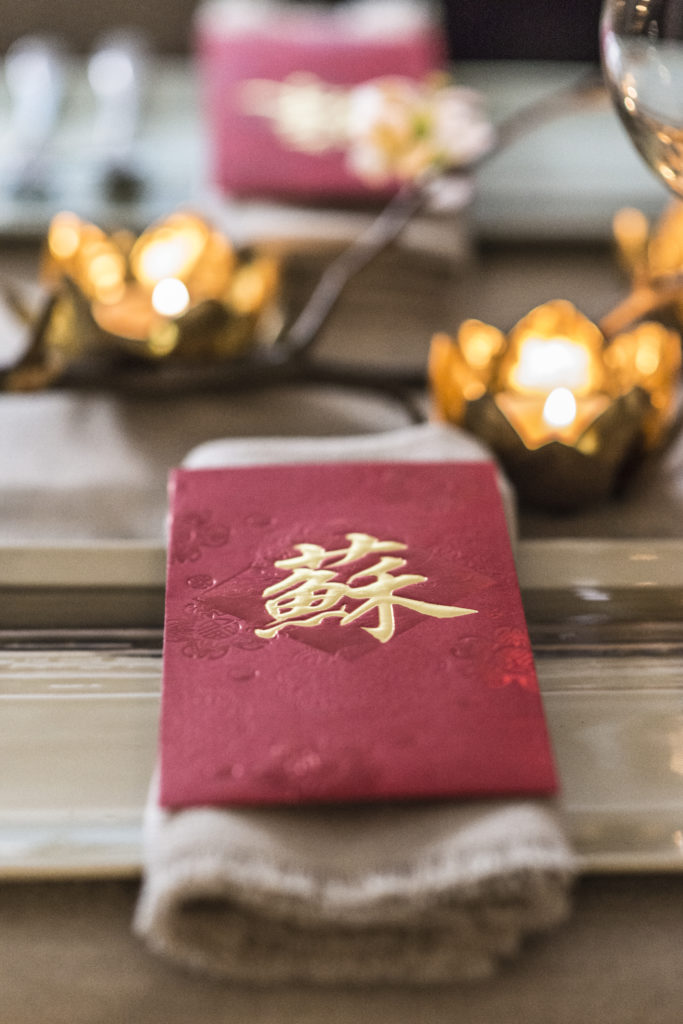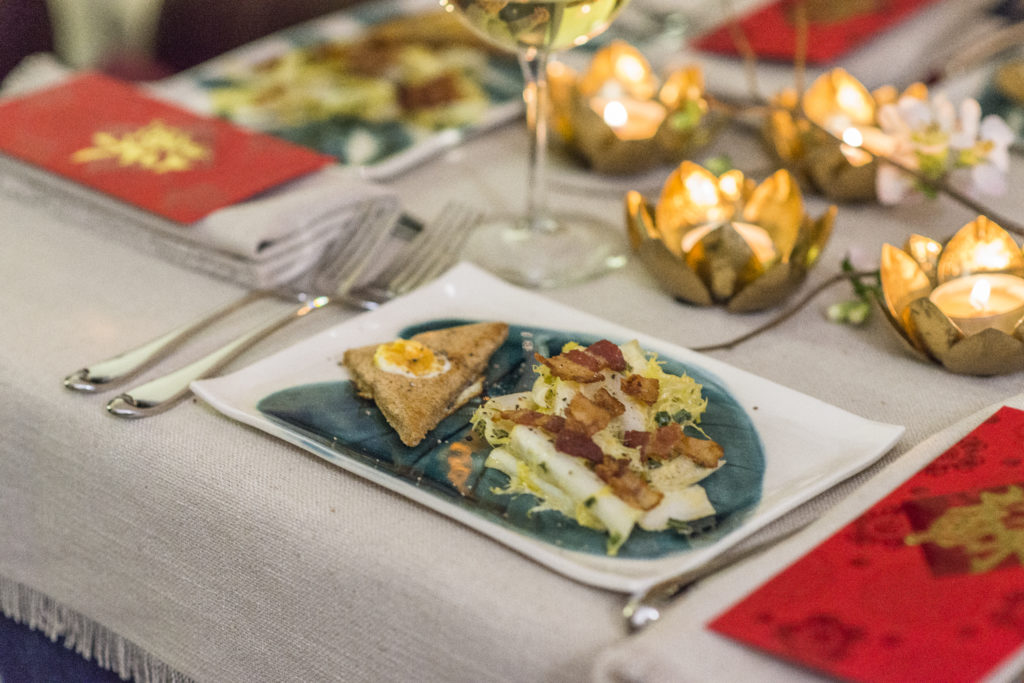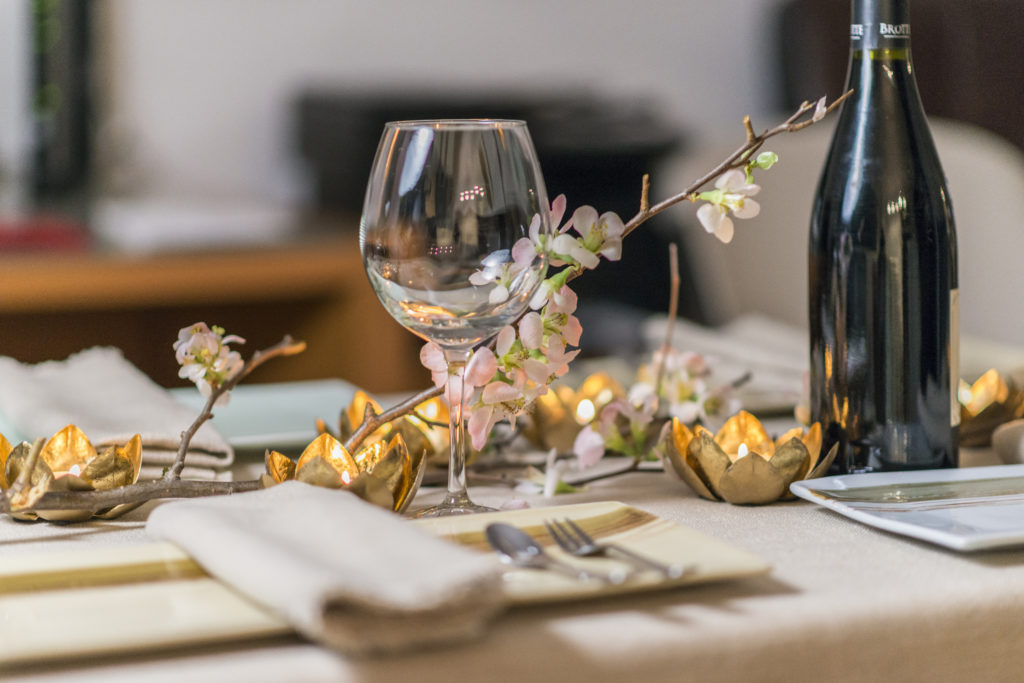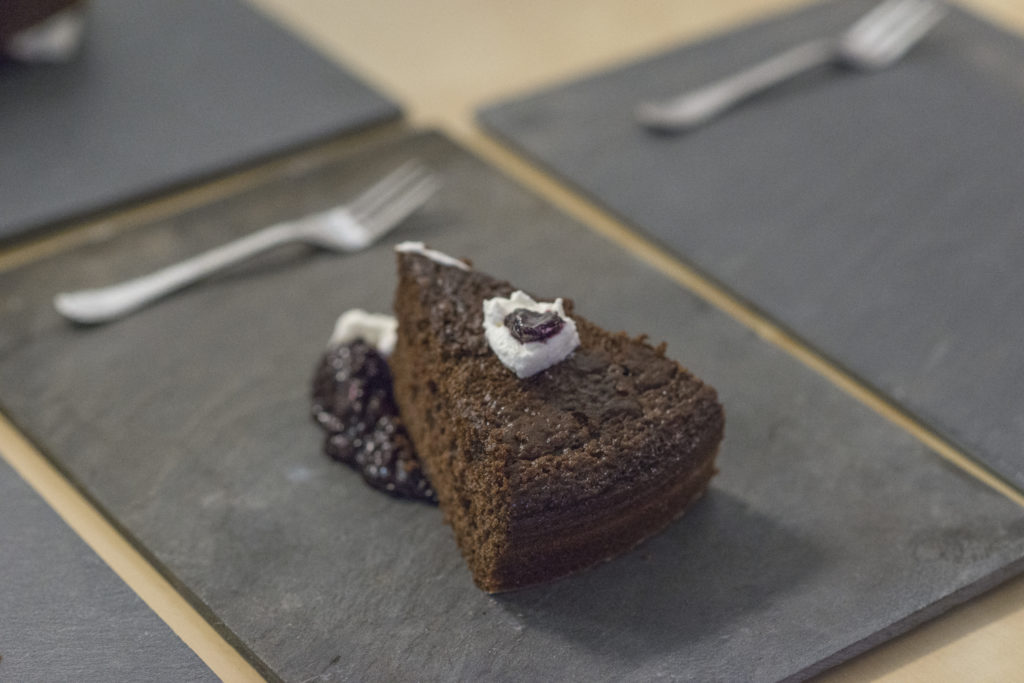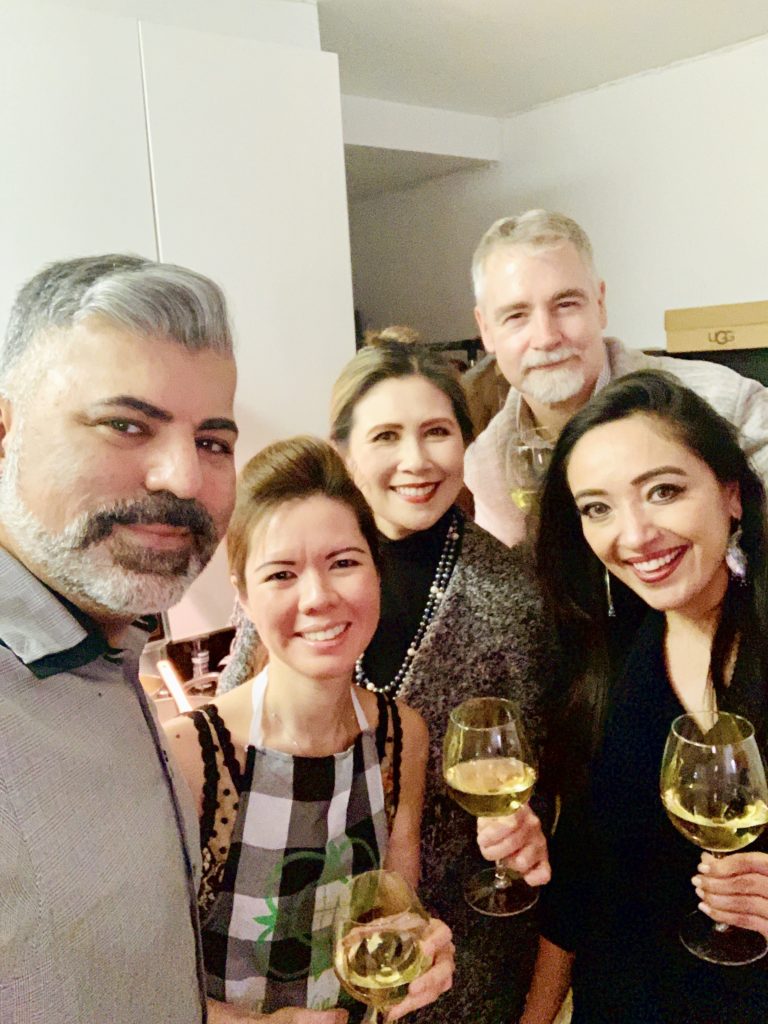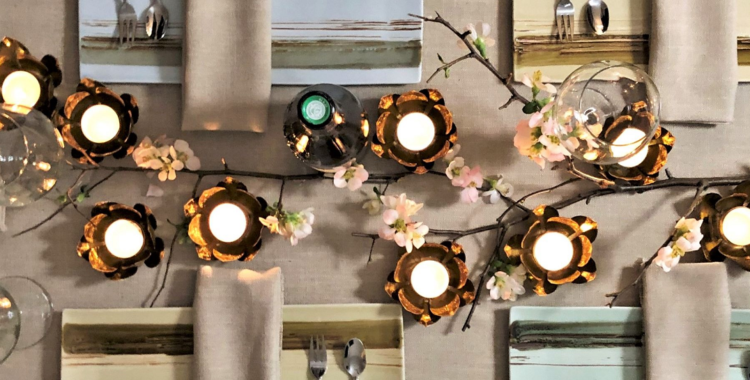
A French Laundry Chinese New year in Brooklyn
Last evening we joined the amazing physician and Storm-Chasing photographer Alice So while pursuing one of her other passions. As some of you who follow her may know she also cooks and like everything she pursues she doesn’t go for the easy stuff. She’s a big fan of Chef Thomas Keller and the restaurant/cookbook French Laundry. The cuisine’s style emphasizes very specific and carefully scrutinized ingredients and involves preparations that often take days which Alice takes on with impeccable precision.
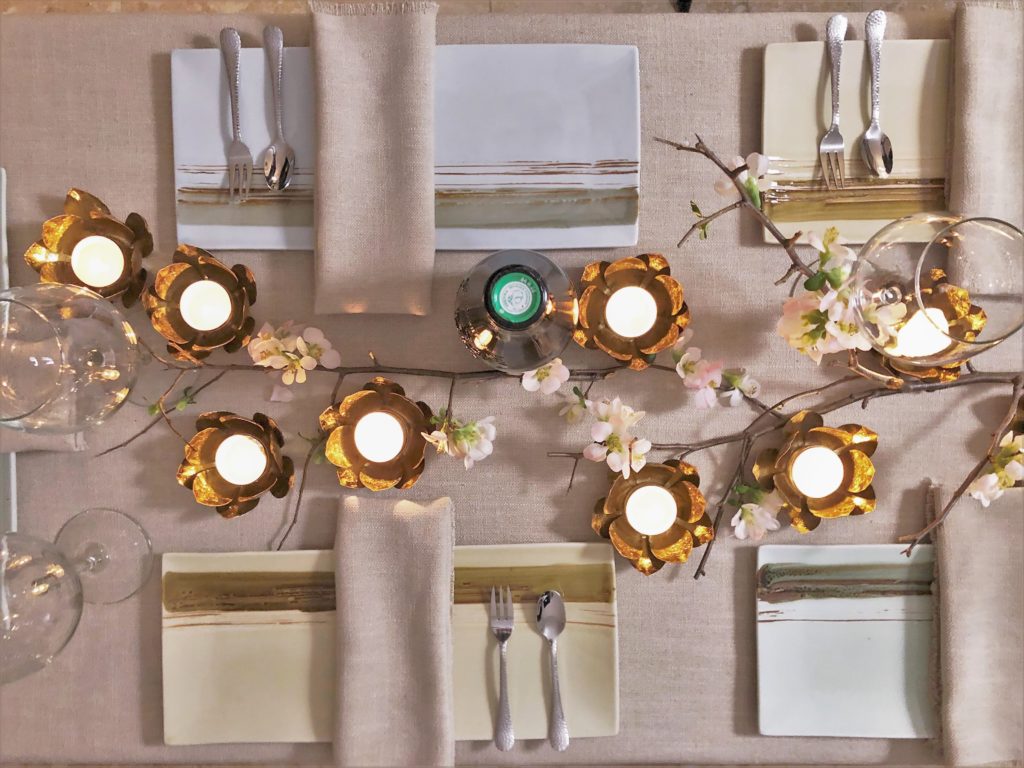
Above: Natural Cherry Blossom Branches with a cascade of gilded cherry blossom tealights set a festive mood. Photo: DeWitt Kendall
There’s certainly a fierce debate among foodies about presenting Haute Cuisine on anything but white. Traditionally the thought was that the plate should be a completely neutral canvas not to distract from the food in any way. The opposite, however, seems to me and may others to be just as much a risk which is that the institutional associations with the white plate drag the food down to the institutional level. Even the purists among ‘Foodies’ are starting to regard the relationship between the plate/serving surface the way they might view Food/Wine pairings. Presentation surfaces that either deliberately contrast or coordinate with the food visually, in texture or by cultural or historical reference if done thoughtfully engages us on many more additional levels. Recently some of the most important hospitality tableware manufacturers such as Steelite have recognized the importance of this additional sensory experience and done richly colored and textured dinnerware lines that have been immensely successful.
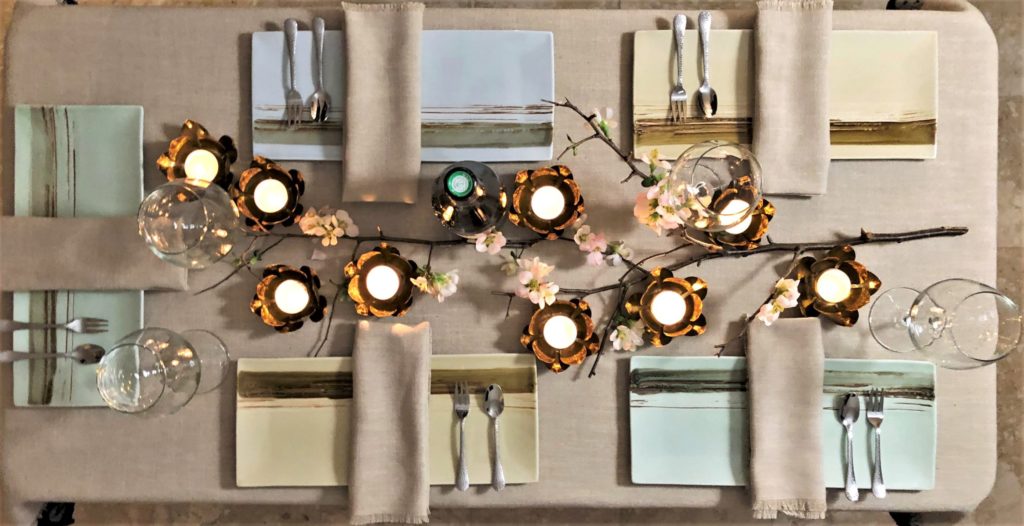
Natural cherry branches laid directly on the table with a cascade of gilded blossom tea lights. Tables for 5, rather than for 4 or 6 are the norm in many Asian cultures. The sounds of the words 4 and to some extent the word 6 in Chinese are similar to words for some unpleasant things in Chinese. So it’s not unusual to see people avoid setting tables for four. (Photo: DeWitt Kendall)
The presentation and timing called for each creation to be plated on a separate plate. Storing multiple courses of plates in a New York apartment isn’t something most New Yorkers do so I offered to help pull together what she needed so Alice could concentrate on the food. We were 5 and the space could accommodate a 24 x 48 folding table which is much narrower than the table width that standard 10.5 – 11″ dinner plates are designed for. Using narrow rectangular plates left the breathing room in the center of the table we needed not to feel cramped. The folding table also needed covering. I’ll discuss this later in other posts but when covering a plastic-topped folding table go about it like you’re not trying to hide something. Use the opportunity for that surface to add to the conversation not just apologize for what’s underneath.
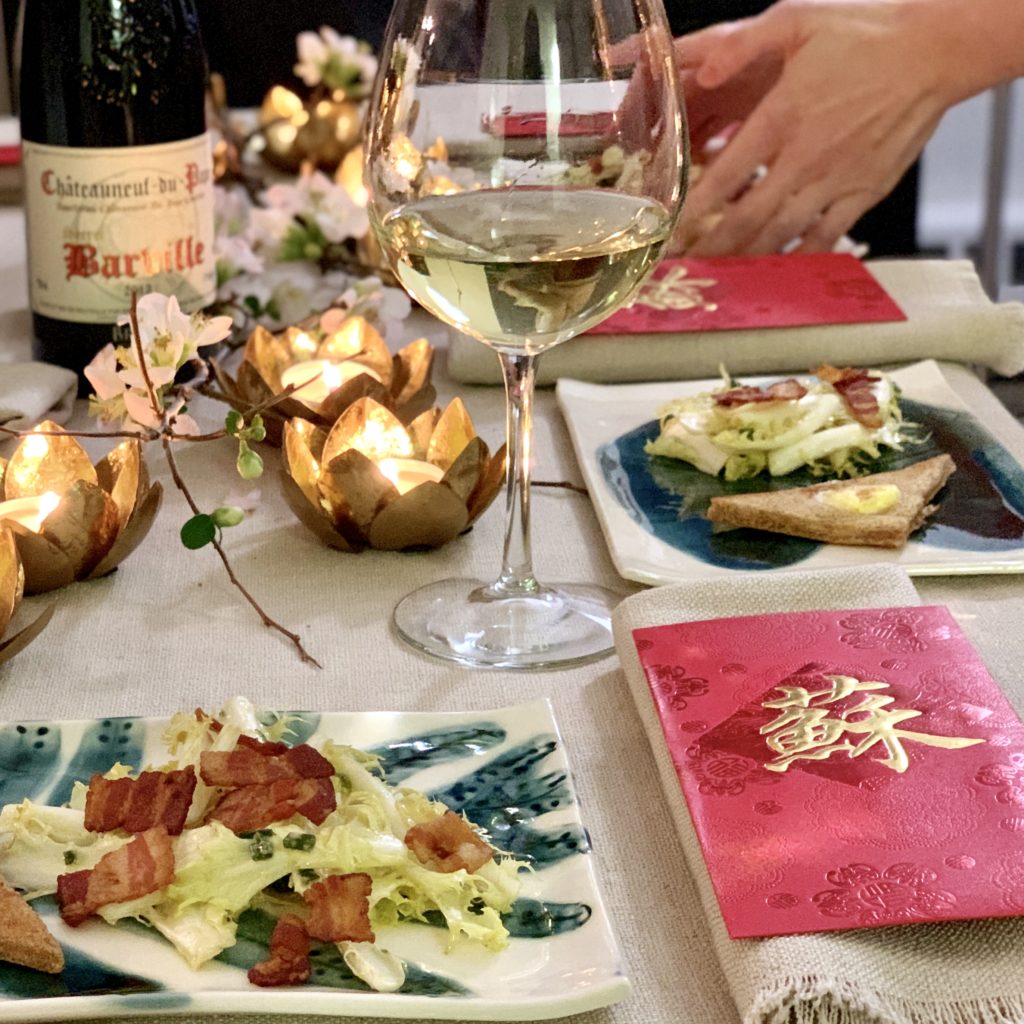
Alice’s travel schedule also called for us to celebrate Chinese New Year a little early. Alice found red envelopes with her name on them which she’d never seen before. Instead of cash we got something even better… an extraordinarily crafted meal worthy of a Michelin star! (Photo: DeWitt Kendall)
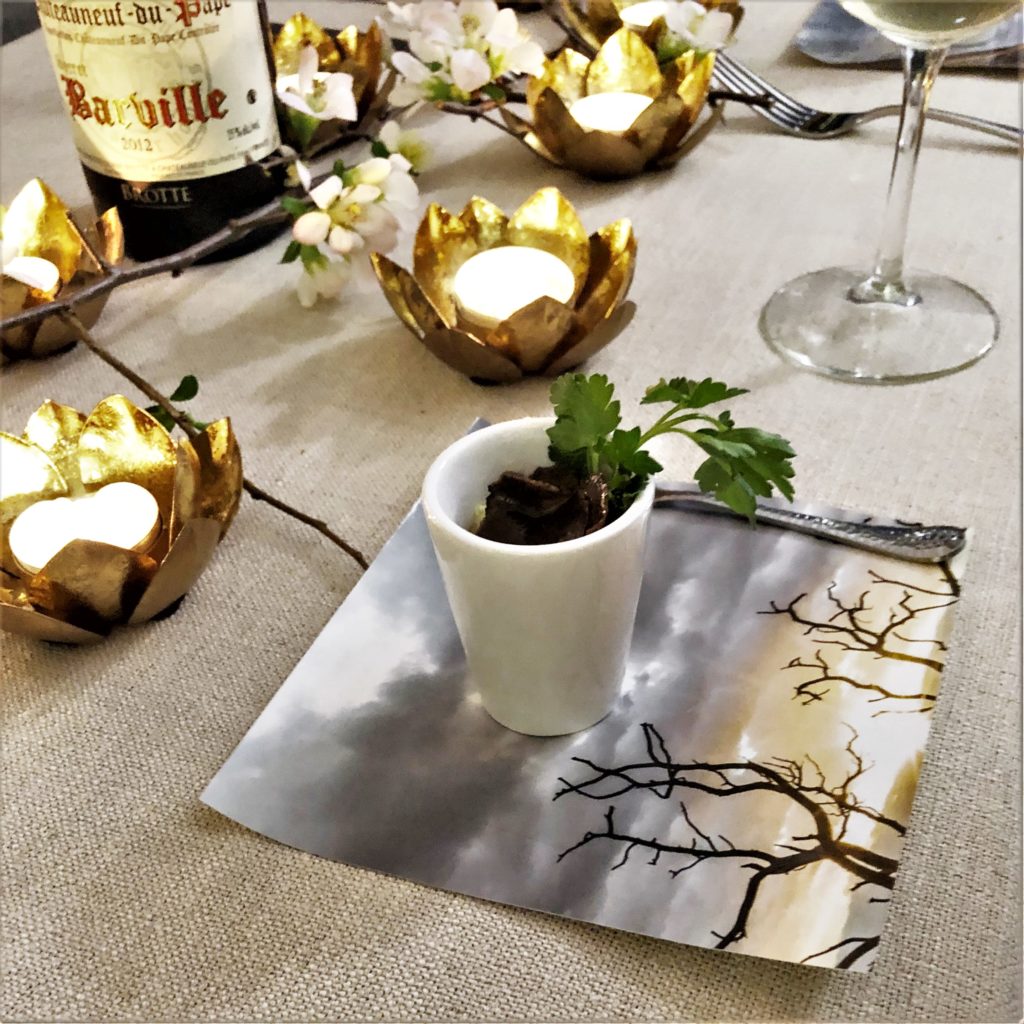
Second Course: Egg Custard & Frisee aux lardons served on a ‘place mat’ made from one of Alice’s wilderness photographs
With a small group, a small table and the plan that the table would be completely cleared between dinner and dessert we layered the tablecloths so that one could simply be removed before dessert came out. The studio pottery plates used for the first two courses called for an earthy texture but still something quiet like natural flax linen. For dessert we removed natural linen to reveal a hand-woven Ivory Coast textile with a bold hand-drawn pattern that seemed to applaud the courses before. The natural slate slabs used for dessert created the illusion that the dessert was floating on a void in the pattern.

